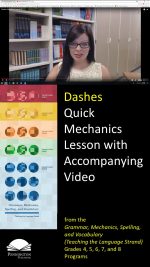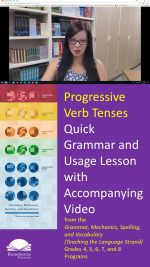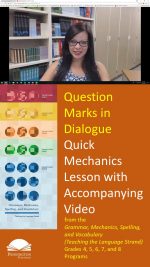Dashes
Dashes
Play the quick video lesson HERE and click the upper left back arrow to return to this lesson.
Common Core Language Standard 2
Dashes are very convenient forms of punctuation. We both use and misuse them.
Today’s mechanics lesson is on how to use dashes. Dashes serve a different purpose than hyphens and are usually longer. Avoid using beginning and ending dashes for apposition (to identify or explain a noun or pronoun before it) or parenthetical expressions (to comment on what comes before). Use commas or parentheses instead. Display Instructional PowerPoint Slides
Dashes are used to show a range of values between dates, times, and numbers. Examples: From July 6‒9 between the hours of 7:00‒10:00 a.m., a crowd of 200‒225 protesters will occupy the park.
Now circle or highlight what is right and revise what is wrong according to mechanics lesson.
Practice: Marta and Zowie worked from 3‒5:00 p.m. after working a night shift, proving that the Johnson-Jones partnership would work any day. The young ladies-who had worked together for years-ran a successful housekeeping business.
Let’s check the Practice Answers.
Mechanics Practice Answers: Marta and Zowie worked from 3‒5:00 p.m. after working a night shift, proving that the Johnson‒Jones partnership would work any day. The young ladies‒who had worked together for years‒ran a successful housekeeping business.
Now let’s apply what we have learned.
Writing Application: Write your own sentence using dashes.
*****

Pennington Publishing Grammar Programs
Teaching Grammar, Usage, and Mechanics (Grades 4, 5, 6, 7, 8, and High School) are full-year, traditional, grade-level grammar, usage, and mechanics programs with plenty of remedial practice to help students catch up while they keep up with grade-level standards. Twice-per-week, 30-minute, no prep lessons in print or interactive Google slides with a fun secret agent theme. Simple sentence diagrams, mentor texts, video lessons, sentence dictations. Plenty of practice in the writing context. Includes biweekly tests and a final exam.
Grammar, Usage, and Mechanics Interactive Notebook (Grades 4‒8) is a full-year, no prep interactive notebook without all the mess. Twice-per-week, 30-minute, no prep grammar, usage, and mechanics lessons, formatted in Cornell Notes with cartoon response, writing application, 3D graphic organizers (easy cut and paste foldables), and great resource links. No need to create a teacher INB for student make-up work—it’s done for you! Plus, get remedial worksheets, biweekly tests, and a final exam.
Syntax in Reading and Writing is a function-based, sentence level syntax program, designed to build reading comprehension and increase writing sophistication. The 18 parts of speech, phrases, and clauses lessons are each leveled from basic (elementary) to advanced (middle and high school) and feature 5 lesson components (10–15 minutes each): 1. Learn It! 2. Identify It! 3. Explain It! (analysis of challenging sentences) 4. Revise It! (kernel sentences, sentence expansion, syntactic manipulation) 5. Create It! (Short writing application with the syntactic focus in different genre).
Get the Diagnostic Grammar, Usage, and Mechanics Assessments, Matrix, and Final Exam FREE Resource:
![]()








